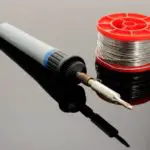One question that many people ask about the FPV hobby is whether FPV drones are legal. That’s a valid question, since FPV drones are fast, and can be dangerous. In this article, I’ll tell you whether FPV drones are legal, and how to fly FPV legally and safely.
FPV drones are legal in many countries if the pilots fulfill the requirements outlined by the authority. Regulated items include the radio frequency and output power, flight distance, size of the drone etc. In the US, the relevant authorities governing FPV drones are both the FAA and FCC.
Flying an FPV drone legally and safely is a responsibility that every drone pilot should take note of. You don’t want to spend money on fines, or cause injury to the members of the public.
FAA Registration
FAA (Federal Aviation Administration) governs the use of drones, be it FPV or non-FPV, because drones are occupying the same airspace as planes.
To fly your drone, be it for recreation or commercial purposes, you need to pass the tests by the FAA.

Recreational flyers just need to pass the free TRUST (The Recreational UAS Safety Test), and register their drones if the drone weighs more than 0.55 lbs/250 g. On the other hand, commercial users will need to fly under Part 107 (read also: how to fly under Part 107).
You can use this tool to check which one you should register yourself with.
After passing the FAA tests, you should know what are the dos and don’ts of drone flying.
FCC Rules
FPV drones’ radio and video transmissions fall under the governance of the FCC or Federal Communications Commission.
While the majority of the radio transmitters are FCC approved, most video transmitters that we use on the FPV drones are not. By law, we can use those non-FCC approved transmitters if we have a ham radio license. Hence, getting a ham radio license is a requirement to fly FPV legally.
FPV Drones – Dos and Don’ts
To help you cover the bases, here are some of the basic things you need to know about safe and legal flying in FPV. Do understand that what I’ve listed here are the most common things Do’s and Don’ts. It is not meant to be exhaustive. Always check out the Federal Aviation Administration (FAA) website for the latest rules and regulations.
Privacy, Safety and Security: Know Where to Fly

There are tons of reasons for a drone pilot to go out there and fly their drones. And it’s safe to say that most of the time, it’s for a pretty harmless reason.
But of course, not everyone around you knows that so always take into consideration the privacy of others. People might not appreciate that there’s a drone “following” them.
More so, the Academy of Model Aeronautics (AMA) and the FAA are incredibly strict on following the rules. There are places that you can’t legally fly your drone over or even have it near the vicinity for security, privacy and safety reasons. Here are some of those places:
- Government-owned buildings
- Correctional facilities
- Military bases
- Stadiums, concert venues, and other places where people would gather
- Heavily-traveled roads
Check the FAA’s B4UFLY App
To help drone pilots keep a note of everything that is allowed and not allowed, the Federal Aviation Administration developed an application where drone pilots can check the areas where they can and cannot fly.
There’s a reason why there are locations that the FAA prohibited for drone flight. Whether it’s for privacy and security reasons or it’s for your safety and the other people in that area.
So before you fly your drone, make sure that the area that you’re flying in is uncontrolled airspace, and be mindful if there are recent flying restrictions implemented in your area. Having the B4UFLY app is a great help.
The B4UFLY app has a couple of features that will help drone pilots fly within legal airspace. The app has an indication for clear status which informs the pilot if it’s safe to fly in that area or not. It also has interactive maps with filtering options so you can check in advance the flying conditions of a certain area.
Aside from the map, B4UFLY also gives you relevant information about controlled airspace, temporary flight restrictions, special use airspace, critical infrastructure, airports, military training routes, and more. You can also find a collection of links to FAA drone resources that might help you as a drone pilot.
However, the B4UFLY app doesn’t allow you to get airspace authorization to fly in controlled airspace. You can only obtain the authorization through the FAA’s Low Altitude Authorization and Notification Capability (LAANC). The app is available on iOS and Android.
Observe the Height Limit
Observing the height limit is the very basic rule that every drone pilot knows and follows. For obvious reasons, you should always fly your drone where it’s close enough for you to see it in your sight and it’s within your controlling limit.
On legal matters, you have to fly your drone under 400 feet, or else it becomes a risk for planes and other items in the sky.

Fly Within the Line of Sight
This goes with flying under the height limit, you should also make sure that you fly within the line of sight.
The visual line of sight (VLOS) refers to your clear view of your drone which is estimated to be 500 meters from you. During flying, it’s important that you fly within VLOS to avoid any possible risks of crashing or poor control of the drone.
But what if you are flying an FPV drone? You can’t see your drone with a goggle, can’t you? Well, you are not exempted under this VLOS rules, but you can have a spotter beside you to watch out for your drone instead. In such case, the drone must be within your spotter’s VLOS, and he must be close enough to you to warn you about the potential risk or danger that your drone may come into.
If you plan to fly outside VLOS, you will need to get a waiver from the FAA. Do check out my tips on flying long range FPV.
Don’t Fly at Night without Preparations
Unless your drone is equipped with the necessary attachments needed for a night flight, don’t attempt to fly your drone at night. Doing so will put you and other people around you at great risk, especially in the events of the crash.
If you want to fly at night, make sure that you have the necessary anti-collision lights attached to the drone so you can know the drone’s location and orientation at all times. Exercise extra precaution especially when avoiding obstacles.
Don’t Fly under Influence
Just like driving, flying your drone under the influence of alcohol or drugs is illegal. Doing so can compromise your safety as well as the people around you because you’re not in your best condition to be able to safely operate your drone.
In the same way, you should make sure that you’re not recklessly operating your drone at all times. Be mindful of your surroundings and always exercise proper caution.
Observe the Speed Limit
The maximum speed allowed by the FAA is 100 mph. Most, if not all commercially available drones do not have the capability to exceed this speed limit though.
UAS Remote ID Qualification
Remote Identification is a qualification that the FAA is pushing for the sake of integrating drones into the National Airspace System (NAS).
Basically, the Remote ID will help the FAA and the law enforcement to be able to locate the control station of the drone when it’s determined to be flying recklessly or in controlled airspace. It will also help the federal agencies to have a proper foundation for safety and security needed for complex drone operations.
You don’t really need to worry about Remote ID for now because this is a new regulation published at the end of 2020. Drone manufacturers are given 18 months to incorporate these requirements into their drone, and we have up to 30 months to comply with this regulation. This gives us up till mid 2023.
Final Words
Flying FPV drones is fun but can be dangerous. That is why rules and regulations are set to protect both the public and the pilots. As the public prejudice has grown over irresponsible use of drones, I urge you to comply with the rules and regulations for the sake of the reputation of this hobby as well as for the interest of everyone.
I’ve compiled 7 things that you need to know before buying an FPV drone. You can read if you are interested.


